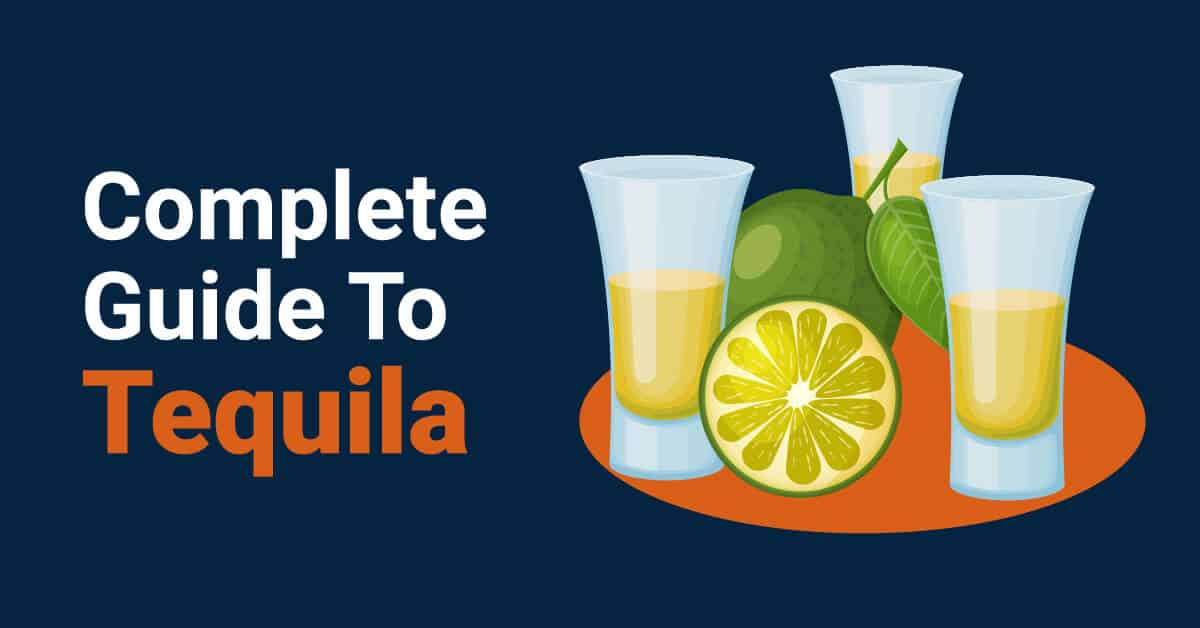Introduction
Tequila has many meanings to people all over the world. Regardless of how you prefer your tequila, it is a versatile spirit that can easily be enjoyed whenever, wherever, and however you want.
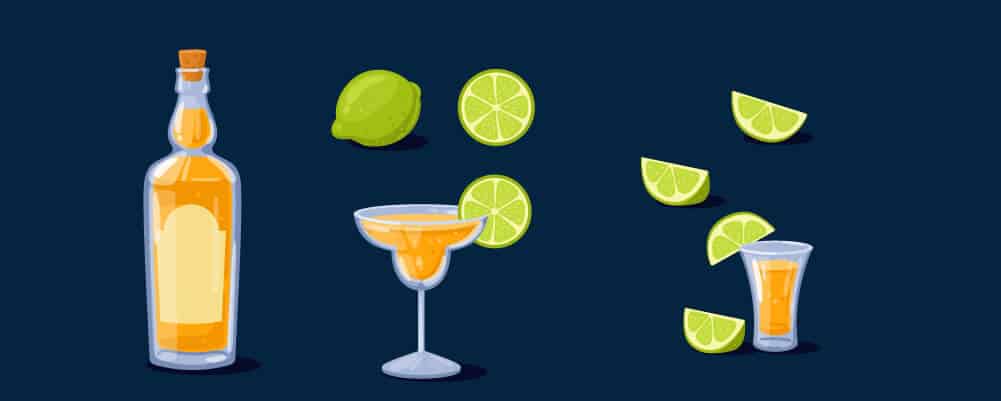
With over 300 separate characteristics, tequila has a depth of aromas and flavors that can be difficult to navigate. Depending on the way its agave was grown, and the individual processes of the distiller, tequila can range anywhere from delicate and fruity to deep and smokey. That’s not even accounting for everything in between!
Although taste is a big factor in how you enjoy tequila, there’s a lot more to this spirit than meets the eye. So, what is it about this particular drink that makes it so interesting?
Here is a complete guide to tequila.
What Is Tequila?
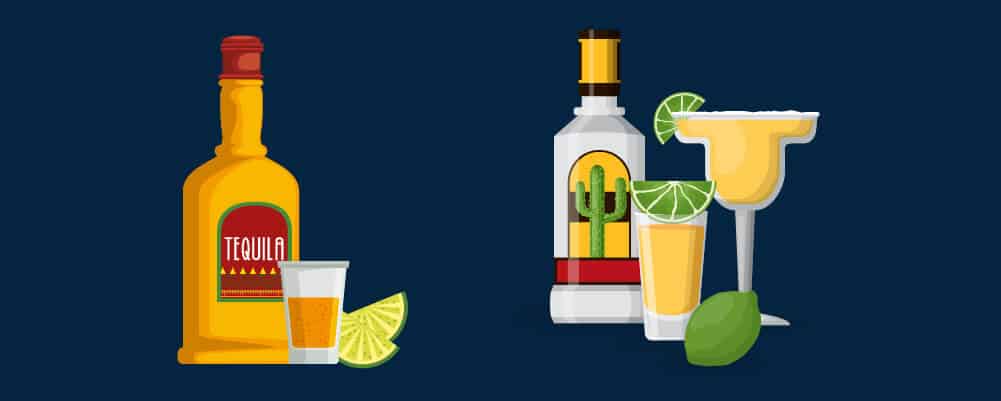
Tequila is made from the sugars that can be found in a blue agave plant. Official Mexican law regulates that tequila can only be produced in the state of Jalisco. Even then, it must be bottled between 35 and 55 percent ABV.
When it is sold in the U.S., any variation of tequila must contain a minimum of 40 percent ABV. Popular brands in the United States include Jose Cuervo, Patron, Don Julio.
Agave plants that you can find in the highlands of Jalisco typically produce a much fruitier and sweeter tasting tequila. This is thanks to richer soil. The lowlands have a much more efficient water supply which means that the agave plants growing there will have a much more earthy flavor.
The Process
There are a few key stages to making tequila. It can be broken down into the following steps: harvesting, baking, extracting, fermenting, distilling, and then aging.
- Harvesting
You must harvest the agave plant. A special circular knife (a coa) is used by a highly skilled worker (jimador) to cut the leaves on the plant from the underground bulb (the piña bulb). Once cut, only the piña remains. This is where the sugars are extracted during pressing. The piñas are left to bleed sap, indicating their readiness to be baked. On average, you will need around 7 kg of piña to make a liter of tequila.
- Baking
The plant’s core (piña) is baked in a horno to convert any starch into sugars. A horno is a big stainless steel or stone oven. However, according to tradition, a fire pit lined with rocks is used. The whole process can last anywhere from 12 to 48 hours and is later left to cool for a further 48 hours (approximately). Slow baking piñas ensures a sweet-tasting tequila instead of bitter.
However, the baking process will differ depending on the tequila producer. This has a large impact on the flavor profile and notes of the tequila.
- Extracting
After the piña has been baked, and starch turned to sugar, they are pressed and shredded so that the juice can be extracted. This is traditionally done using a large volcanic stone wheel (called a Tahona) in a pit, which crushes the piña.
Agave fibers in the piñas are crushed and sugars are then released so they can be collected. In modern times, the majority of tequila distilleries utilize conveyor belts to pass along the piñas to a series of crushers. These do the same job as the Tahona but are much quicker.
Water is usually then sprayed onto the piña fibers to ensure that all the sugars have been removed. This sugary liquid – called the Mosto – passes through a pachaquil, which eliminates large particles. This particular part of the process can greatly influence the flavor during the fermentation and distillation processes.
- Fermentation
Sugars are extracted and then fermented. In this step, all sugars present in the plant are converted into alcohol via yeast. Before fermentation, however, the Mosto is quality checked to comprehend the content of fermentable sugars. This ensures a successful fermentation process.
The liquid is poured into large fermentation tanks and left for anywhere between 1 and 3 days. Most distilleries used cultivated yeast for this process, but some traditional distillers will opt for wild yeast that is present in the atmosphere.
If tequila is labeled as 100% blue agave, this means that it has only used agave sugar during fermentation. A mixto tequila means that during the fermentation process, other sugars have been mixed in along with the agave.
- Distillation
Now that this has been done, the fermented liquid has to be purified. Using either two wooden vats or stainless steel distillation towers, the liquid has to be twice distilled.
The first distillation (deztrozamiento) takes only a few hours and returns cloudy alcohol of around 20% ABV which is called the ordinario. The second step, rectification, takes an additional three to four hours. This process also distills the ordinario again. After this process is complete the overall alcohol content will rise to around 55% ABV. it can now be used as tequila.
All independent distillers must be very careful during this process to achieve their desired tequila taste. This is because the many notes in tequila all evaporate at different temperatures. So, if the distiller would like to keep a particular flavor in their alcohol, then the temperature, and the duration, of the distillation need to be closely monitored.
Up until this point, the whole process can take up to around five days. This number can change.
- Aging
All tequila is then aged. It’s important to note that the overall distillery time will vary depending on the type of tequila the producer is looking to make. Put simply, the amount of time that the tequila spends in a barrel will determine its color and flavor intensity.
This process can take anywhere from days to years; it is all dependent on style. Blanco tequila is aged for the shortest amount of time, and sometimes not at all, whereas extra añejo tequila is aged the longest.
Origin Of Tequila

100 B.C. to 200 A.D.: The Aztecs Ferment Agave
The first versions of the tequila we know and love date back to 1000 BC. Talk about a drink with a rich history!
Tequila was never originally considered to be any party-goers first drink choice. Instead, the Aztecs chose to ferment a drink called pulque which utilized the sap of the agave plant. This milk-like liquid became such an important part of the Aztec culture that they began to worship two gods who were widely known for their relationship to booze.
The first was the goddess of the maguey, Mayahuel, and the second was the god of pulque, which was her husband Patecatl. Though initial documentation of pulque appeared via pictograms around 200 A.D., the drink became popular during the following centuries when the Aztecs received a surprise visit from the Spanish.
The 1400s & 1500s: The Spanish Distill Agave
Though there are many theories, the majority of evidence points to the fact that a Spanish invasion led to the start of tequila distillation. Spaniards could not live without brandy for long periods. So when supplies were running low, they were forced to improvise with agave and mud – creating a mixture that resembles what we know today as Mezcal.
During the mid 16th century, the Spanish government opened up a trade route between Mexico and Manila. In the early 17th century, the Marquis of Altamira made orders for the first large-scale distillery to be built. This was carried out in a place that is now Tequila, Jalisco.
The 1700s & 1800s: The Birth Of Modern Tequila
Tequila was first commercially produced in the late 1700s (1758) by The Cuervo family. It was later distilled commercially by the Sauza family. Though there were probably many more distillers and small producers in between, these two names continue to contribute massively to the U.S. tequila industry – even though a few centuries have passed.
Don Cenobio Sauza was reportedly responsible for identifying blue agave as the best option for producing tequila—and by this point what we now know as tequila was likely being produced at these distilleries.
It was at this point that the tequila being produced began to resemble the tequila that we can purchase today.
1936: Invention Of The Margarita
In 1936 the Tequila Margarita was introduced. As was the case with rye whiskey from Canada during the Prohibition era, tequila also found a home with scofflaws in America.
Unable to get their hands on much beyond second-rate whiskey and bathtub gin, U.S. drinkers started to take advantage of the sweet agave nectar produced in Mexico.
By the time 1936 rolled around, it was once again legal to drink in the States. Taking a trip to Mexico for a good time was no longer requisite.
There are claims that a man named James Graham and his wife ventured to Tijuana, where they wound up in one of the surviving bars. This establishment was run by an Irishman named Madden, known for his incredible Tequila Daisy drink.
Although Madden later admitted that the drink was created completely by chance, it has become one of the most celebrated tequila-based drinks in the U.S.
1974
In a bid to depict their ownership of “tequila,” the Mexican government declared the term as its intellectual property in 1974. As a result, it became a requirement that all tequila be made and aged in particular areas of Mexico. It also prevented other countries from producing or selling their own versions of tequila. It was actually illegal for them to do so!
To promote tequila culture and increase the overall quality of the drink, The Tequila Regulatory Council was formed in 1994. This Mexican non-profit organization overlooks the 135 registered tequila producers and works to certify the bottling, production, and labeling of tequila according to the Official Mexican Standard Of Tequila.
2015
From the humble pulque to the delicious craft tequilas produced today, bartenders around the world continue to use and incorporate the humble taste of agave nectar into other drinks. This includes classic cocktails such as the classic Tequila Sunrise, Oaxaca Old Fashioned, or a simple Margarita.
This Mexican spirit has commanded so much respect that there is now a broad range of specialized tequila and Mezcal bars open across the U.S. that pride themselves on housing extensive tequila selections. Or smaller, handpicked ones – depending on the venue itself.
Different Types Of Tequila

Reposado

Tequila Reposado is aged in wood barrels for up to one year. This gives it just enough time to develop a distinct yet highly unique flavor profile without losing any of the younger notes from the original agave juice. Some reposados are hardy enough to support cocktails while subtler expressions are best sipped neat or over ice. This tequila makes for excellent, dynamic margaritas.
Añejo

This extra-aged tequila is typically left in wood barrels for one to three years. The barrel size for añejo tequila is usually limited to 600 liters, meaning that every drop takes some character from the wood which shows that distinction does come with age. The notes and colors of a reposado are darkened by the extra time in the barrel, ensuring the tequila has a much richer and more intense taste.
Extra Añejo

Extra Añejo tequila is aged in wood barrels for more than three years. It’s one of the newest types of tequila in its long and detailed history. It must be cut with water to temper the proof, resulting in a smoother final product. Longer barrel time increases the prestige of tequila which means that it is often quite an expensive drink to purchase.
Plata
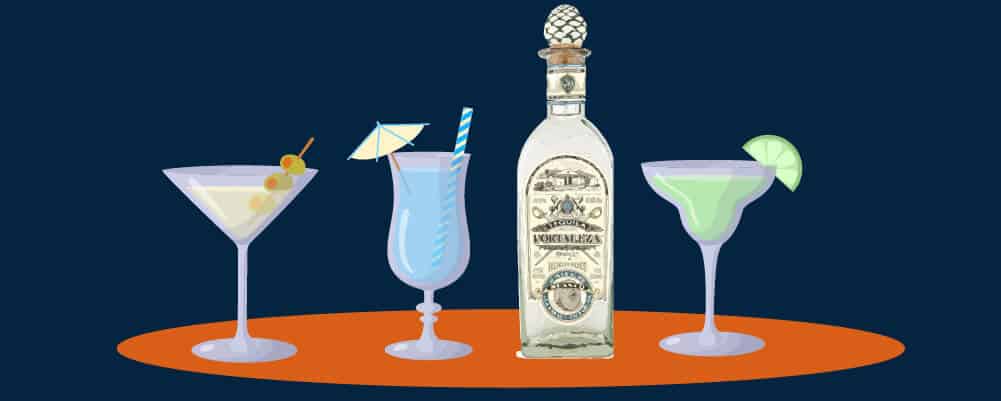
Plata, also known as un-aged Blanco or Silver, never sees the interior of an oak barrel. Because it is not influenced by the wood it provides the purest form of natural agave flavors. Its complex flavor makeup is usually fiery, vivid, and young which can be a bit harsh on some palates – even if it is left for some time so that the flavors can settle. This makes Blanco tequila great in cocktails as the bold flavor will match well with your mixer of choice.
Joven
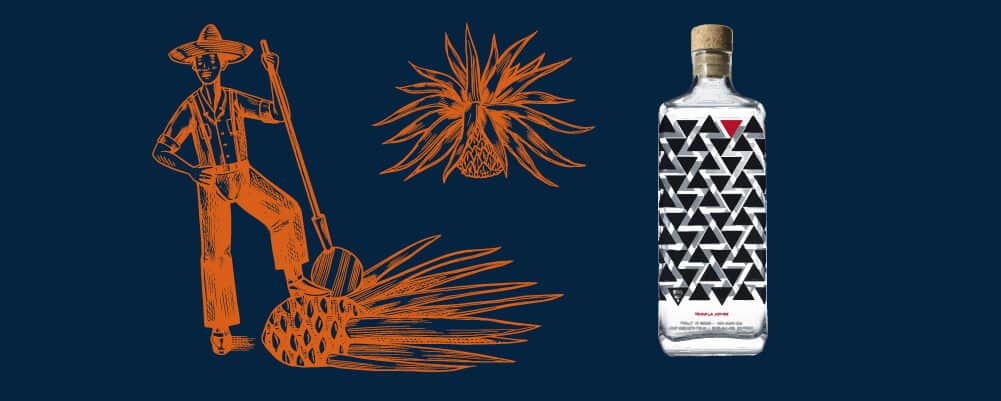
Joven is un-aged Blanco tequila that has been blended with Añejo or golden coloring to achieve its distinctive look and taste. Combining several types of tequila produces a nuanced product reminiscent of blended scotch. Joven is particularly adept in cocktails as it provides the bright citrus of Blanco and the vibrant character of rested tequila all in one neat package.
How To Choose The Best Tequila For You Based On Taste Profiles

When trying tequila for the first time, there are a few things you should taste for. First, note whether it tastes and smells like cooked agave (both sweet and earthy), or if it is overtly sweet because of excess processed sugar. The highest quality tequilas will taste and smell like the agricultural product that was used to make them.
But depending on the category and kind of tequila, there’s a possibility that you will find different aromas and flavors as a result of the different processes.
When trying a new tequila, it’s always best to select one that is 100% agave. But the best tequila to begin with overall is a Blanco. It hasn’t been stored inside an oak barrel so the flavors are very telling, and it is quite light in comparison to other variations of the spirit.
However, the best tequila for you is entirely dependent on your personal preference in terms of taste, texture, and aroma.
Consider Texture
You must consider the texture of tequila before finding out whether it is a suitable drink for your palate. As with any spirit, you should smell the drink, take a sip, and then repeat so you can draw out all the available flavors.
Firstly, ask yourself whether it is a luxurious mouthful or a bitter, sharp, and entirely one-note flavor. Lower quality tequilas tend to be bitter and feel almost water-like with each mouthful.
As you exhale, analyze the character of the tequila. A quality Añejo will resemble a fine cognac – with a less pronounced agave flavor and smoother texture. But if you are sipping a Blanco, you will likely be hit with a strong agave flavor and a more pronounced sharpness. Because of this, many people prefer a Reposado, which can offer an excellent balance between the two.
You should also note the texture as you take sips of the spirit. Blancos tend to be somewhat oily whereas aged tequilas typically offer a silkier or creamier consistency.
Look Out For Simple Aroma Notes
Like any spirit, simply sniffing a glass of tequila if you’re unfamiliar with its complex flavors and aromas can make it difficult to distinguish a particular accent. In a tequila, you may find the following aromas:
- Primary – the raw material (cooked or raw agave)
- Secondary – hints of fruit from the fermentation and distillation process
- Tertiary – accents of sweetness, spice, and wood, which are infused during the tequilas rest in an oak barrel
You should also consider the type of barrel used in the tequila-making process. Longer rested and more vintage tequilas may offer increasingly complex notes including roasted or bitter elements, or may even have sweeter notes like vanilla and chocolate, because of their extended contact time with oak barrels.
Basic Flavors
You might now be wondering what the basic flavor profiles are for all types of tequila, and which one might be best suited to your palate. Here is a short and simple guide.
- Wood: A woody tasting tequila manifests itself through oak aging and from the cooking process of the agave plant. Such flavors present themselves as wood smoke or charcoal. The long oak aging process of Añejo and Extra Añejo gives the tequila this type of flavor.
- Sweet: If you’re actively looking for tequila with a sweeter taste, you may want to opt for a Mixto instead of 100% agave. Mixto tequilas feature additional sugars (cane or high fructose syrup). You may find mixto tequilas with any of the following tastes: honey, vanilla, or caramel. Their sweetness makes them excellent for cocktails.
- Spice: In tequila, the spice can refer to many types, including hot spices such as pepper or chili, sweet spices such as vanilla or cinnamon, or herbal spices such as mint or thyme. Tequila Blanco has not been aged and usually features notes of pepper and citrus with a spicy finish. It’s also great for lighter cocktails and citrus drinks such as margaritas.
- Fruity: This can refer to the presence of citrus hints throughout the drink. A fruity taste may include hints of common fruits such as lemon, lime, or apple – or tropical fruits like pineapple and passion fruit. These notes are obtained mainly during the processes of hydrolysis and fermentation but can make for a very intense drinking experience. Añejo tends to be the most versatile tequila regarding fruit.
- Nut: Many tequilas feature hints of nut. You may find yourself recognizing the taste of hazelnuts, walnuts, coconut, or almonds. Some of these comparative flavors can be found in whiskey, Sherry, and Port. Añejo tequila might become your new signature if you enjoy this type of flavor.
How To Choose An Ideal Tequila Based On Taste Profiles
The best tequila for you will depend entirely upon your flavor preferences for alcoholic drinks. Tequila can be outwardly sweet, citric, and spicy, or may offer mellowed notes of sweetness and spice coupled with additional notes of oak and vanilla. The brand you select and the way they make and age their tequila will determine which type works for you.
Generally, un-aged Blanco or reposado tequilas are usually best served in popular cocktails due to the strong citric and peppery taste present. Añejo tequilas are delicious when they are consumed in a shot or neat. This is because of its complex flavor profiles.
What You Must Remember
With time and practice, you will be able to detect many other notes that will make the tasting and embracing of tequila an even better experience.
Remember that when you open a bottle of tequila, you subject its contents to oxidization, just as you would a bottle of wine. This will rob the tequila of its agave flavors in a short space of time. You can also lose alcohol to evaporation so it’s best to drink it within 1-2 months so that it doesn’t lose its zest.
And finally, you don’t have to choose the most expensive tequila to find a high-quality and flavorful drink that sits well on your tongue. Instead of acknowledging price, you should research each distillery to find out how they make their tequila.
How To Serve
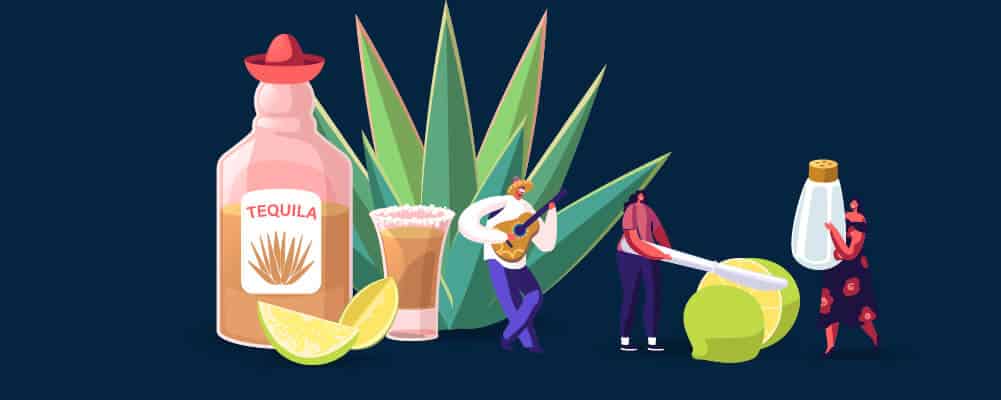
Serve At Room Temperature
Tequila is meant to be savored and enjoyed. If you want to appreciate the full bouquet and body of this spirit, then you should try it at room temperature.
The cold could sometimes mask tequila aromas – one of the most enticing parts of the drink. However, they will flourish when served at room temperature. A colder temperature may also dull the overall taste of the tequila which will prevent the flavor from being fully present. Serving it at room temperature, however, will help you to embrace the taste.
To successfully serve tequila at room temperature, you should make sure that your bottle of choice is stored out of the path of direct sunlight. This ensures that the flavor and aroma of the tequila aren’t tainted by unnecessary heat.
Use room temperature tequila in whichever way you prefer to get the full scope of flavors.
Serve In A Chilled Glass
Unless you’re a professional taster, judging a spirits contest, or writing a product description, chances are you’re drinking tequila for your enjoyment.
In this case, and depending on personal preference, you might want to consider drinking your tequila in a chilled glass. This would be magnificent on an especially hot day where a cold glass of your favorite variation of this spirit is exactly what you need to unwind.
Neat
If you can’t stomach brandy, then you should try doing some tequila straight, no ice. Neat tequila is something nice to sip on after a long family dinner or during one of those grueling times when you’re asked about where your life is going.
We are all aware of the benefits and costs of drinking lots of tequila on a night out. But that doesn’t mean you can’t consume your favorite liquor in a casual, relaxed way! This spirit is made to be savored and enjoyed neat.
That being said, you should treat it as if it is a fine wine. Take small, slow sips so that you can enjoy each mouthful. Swish each sip around in your mouth a couple of times if you want to experience the complete range of flavors. This allows the tequila to open up in your mouth and expand your taste buds.
On The Rocks
This might be pretty straightforward and, to say the least, a little budget and lacking in the creativity department, but it never fails. This is the perfect consumption method if you are trying to avoid sugary sodas, or simply eliminate calorific alcohol from your diet.
If you’re looking to shift a few pounds but can’t give up on alcohol entirely, tequila is a great drink choice!
One of the greatest ways to enjoy all the flavors of Añejo Tequila is by drinking it on the rocks. It is the best way to appreciate and realize all the flavors this dark tequila has to offer. You will love the finish of vanilla and smooth caramel mixed with the salty citrus characteristics of tequila.
While Añejo tequilas make exceptional neat drinks, many people have stated that they prefer their tequila with a couple of ice cubes. As the ice melts, it will mellow the strong alcohol aroma of the tequila and will also bring out complex flavor profiles.
If you’re quite new to drinking this spirit on the rocks, feel free to add some orange or lime for extra flavor. Be sure to stir the alcohol around the ice cube. This will help you to mellow the liquor and also open up the flavors of the tequila!
Mixed In A Cocktail
Tequila is a spirit that can create far more than a simple margarita. Whatever you end up mixing it with – you will end up with excellent (and delicious) results!
If you cannot get on with the taste of this spirit then you can experiment by adding it to various drinks. But you don’t have to overcomplicate things! There is no better tequila cocktail than a Paloma (tequila, club soda, and grapefruit juice) or a Tequila Sunrise (tequila, grenadine, and orange juice.)
You could also try any of the following for something just as tasty, but also a little different:
- Tequila Cobbler
- Bloody Maria
- Tequila Blackberry Smash
- Tequila Mojito
With Salt And Lime
Tequila outside of Mexico generally doesn’t have as much of an authentic taste. This is a big reason why people tend to opt to consume the spirit in the form of a quick shot.
If you need to loosen up your limbs a little bit, the Western method of taking a tequila shot might be the answer to your worries. To properly take a shot of tequila you must have salt, lime, and tequila, all carried out in a specific order.
As long as you lick the salt off of your hand, take the shot, and then finish the process by sucking on a lime wedge – you’ll ace a tequila shot in no time at all!
Enjoying a tequila shot can add some fun to any gathering or party and can help temper the astringency of the alcohol.
And remember, with such strong flavors, it is wise to clear your palate in between tastes. Keep some water handy and coffee beans to sniff!
Summary

Tequila is a complex drink with so many flavors, aromas, and variations that no two glasses are ever completely the same. It is a drink that must be savored, not rushed, and also makes the perfect accompaniment for just about any occasion.
There is a lot to learn and remember about this spirit. But this guide covers just about everything you need to know.

